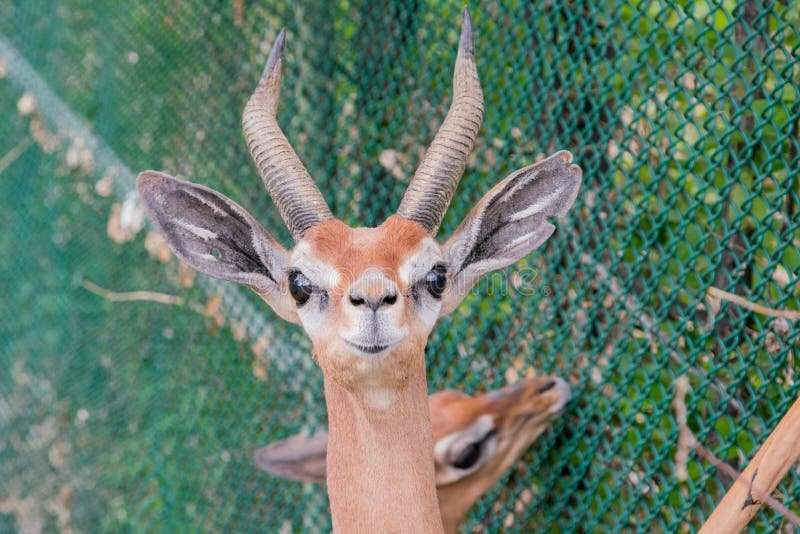
Honestly, encountering a gerenuk is a unique experience, full of wonder and intrigue. When you think about it, having a wildlife encounter is a bit like stumbling upon an unexpected party in the woods—you want to enjoy it but also be respectful and safe. So, let’s explore the best ways to handle a close encounter with a gerenuk, ensuring you get the most out of your wildlife experience while keeping the animal safe and undisturbed.
Understand the Gerenuk’s Habits
First things first, it helps to know a bit about these fascinating creatures. Gerenuks are known for their unique feeding behavior; they can reach high branches to nibble on leaves thanks to their long necks and legs. This means you’ll often find them in areas with plenty of tall plants, like acacia trees. Understanding their habits will help you know what to look for when spotting them in the wild.
These animals are also most active during the cooler parts of the day, usually early morning and late afternoon. You might see them foraging or browsing in groups, but they can also be solitary. If you’re hiking in their territory, keep your eyes peeled during these times—you may just catch them in action!
Stay Calm and Observe
If you do spot a gerenuk, the first thing to remember is to stay calm. It’s easy to get excited, but rushing toward the animal can startle it. Instead, take a moment to breathe and appreciate the view. Let’s be real—watching a gerenuk in its natural habitat is a privilege, and it deserves your respect.
Find a spot where you can stand or sit quietly, and let the gerenuk come into view. Use binoculars if you have them, as they can give you a closer look without intruding on the animal’s space. You might be surprised by how much you can learn by simply observing. Watch how it interacts with its environment, the way it moves, and even its vocalizations—if you’re lucky, you might hear its soft bleats.
Maintain a Safe Distance
When you encounter a gerenuk, it’s crucial to maintain a safe distance. This isn’t just for your safety; it’s also for the gerenuk’s well-being. Getting too close can cause stress for the animal and disrupt its natural behavior. Most wildlife experts recommend staying at least 100 yards away.
Use your observation skills to gauge the gerenuk’s comfort level. If it seems nervous or starts to move away, take a step back. Remember, this is their home, and you’re merely a visitor. Keeping a respectful distance ensures that you can enjoy the moment without impacting their life.
Document the Experience
If you’re a wildlife enthusiast, you’ll probably want to capture this moment. Taking photos can help you remember your encounter and share it with friends later. Make sure to use a zoom lens if you have one to avoid getting too close. Use natural light and try to snap pictures at the right angle for the best view.
Showcasing your stunning photos can also help others appreciate these beautiful creatures, sparking interest in their conservation. Just remember to document from a distance—this way, you’re not disturbing the animal or its surroundings.
Know When to Leave
The reality of wildlife encounters is that they’re fleeting moments. As much as you might want to linger, it’s essential to know when to move on. If the gerenuk shows signs of stress, like quickened movements or a raised head, it’s time to quietly back away and give it some space.
Leaving the area allows the gerenuk to return to its natural behavior. Plus, it opens the door for other wildlife encounters as you explore more of the landscape. So, appreciate the time you had and remember that part of viewing wildlife is knowing when to let go.
Learn and Share Your Knowledge
After your encounter, consider diving deeper into the world of gerenuks and their habitats. Learning about their behaviors, diet, and the ecosystems they inhabit can deepen your appreciation for these unique animals. There’s a wealth of information available, from documentaries to wildlife blogs (like this one) where you can find stories and insights about your experience.
Don’t keep your cool encounter to yourself! Share with friends, family, or social media followers. Your stories can inspire others to seek out wildlife experiences responsibly. Plus, discussing it can spark conversations about the importance of wildlife conservation and the challenges these animals face in the wild.
Respect Wildlife Regulations
Finally, it’s important to know the rules and regulations of the area you’re visiting. Many parks and reserves have guidelines in place to protect both visitors and wildlife. Familiarize yourself with these rules before your trip, and make sure to follow them while you’re out in the wild.
By adhering to these guidelines, you’re helping to ensure that future generations can enjoy wildlife encounters as well. Following regulations not only keeps you safe but also contributes to the conservation of vulnerable species like the gerenuk.
In conclusion, encountering a gerenuk in the wild is an exciting and special experience. By understanding their habits, staying calm, maintaining a safe distance, and respecting wildlife guidelines, you can enjoy this encounter in a way that benefits both you and the animal. So next time you find yourself in their territory, remember these tips, and embrace the moment!

